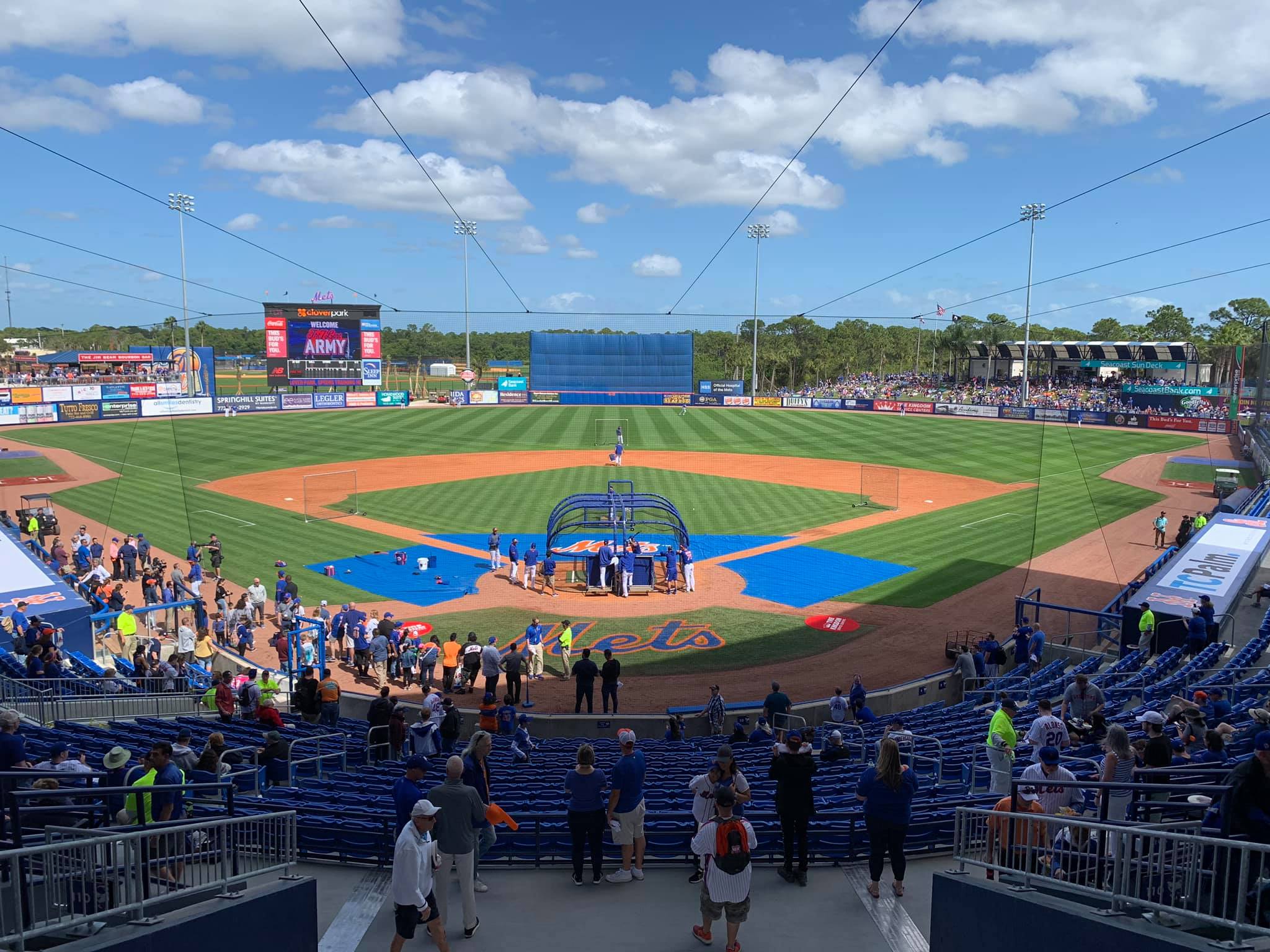
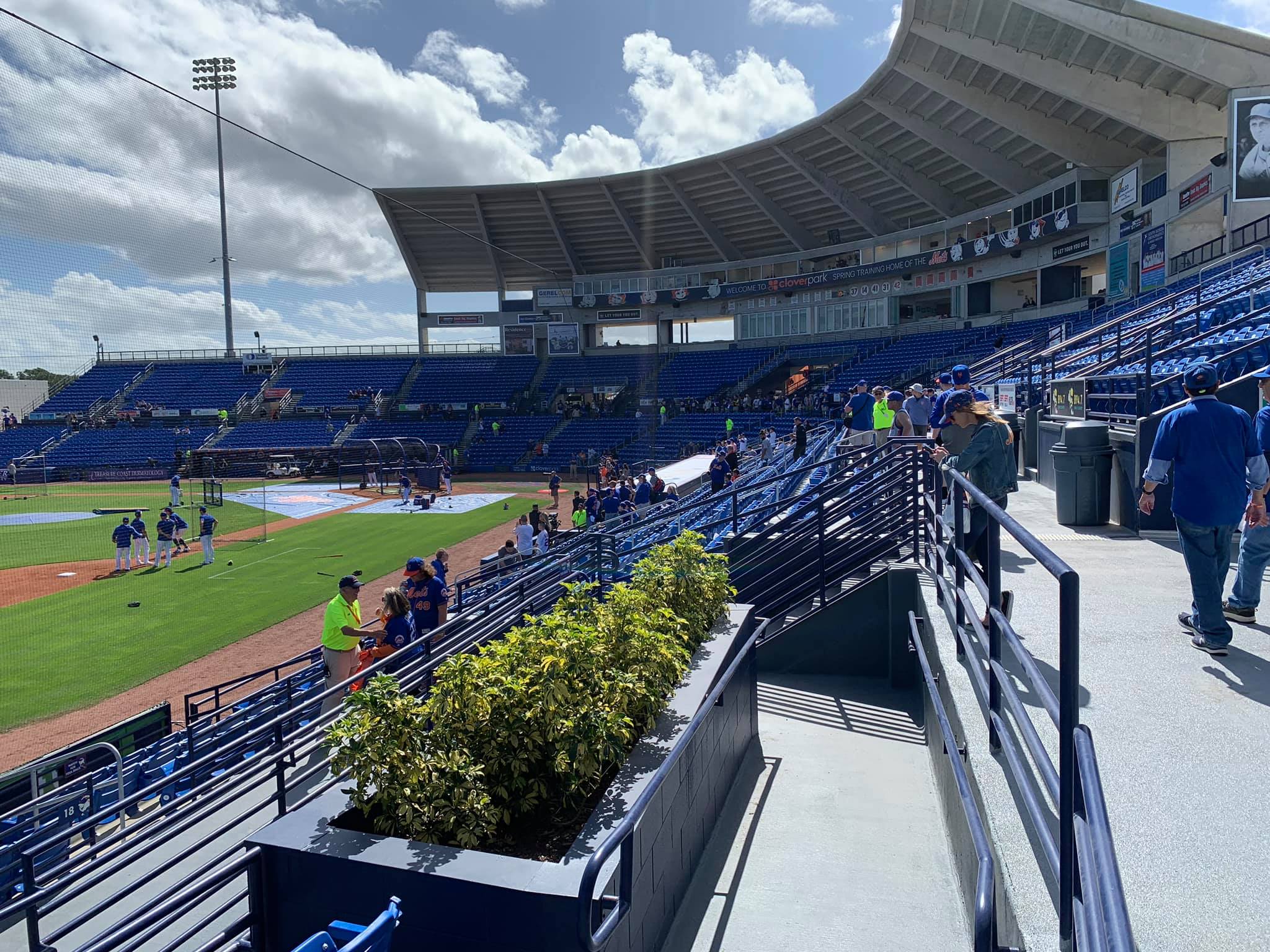
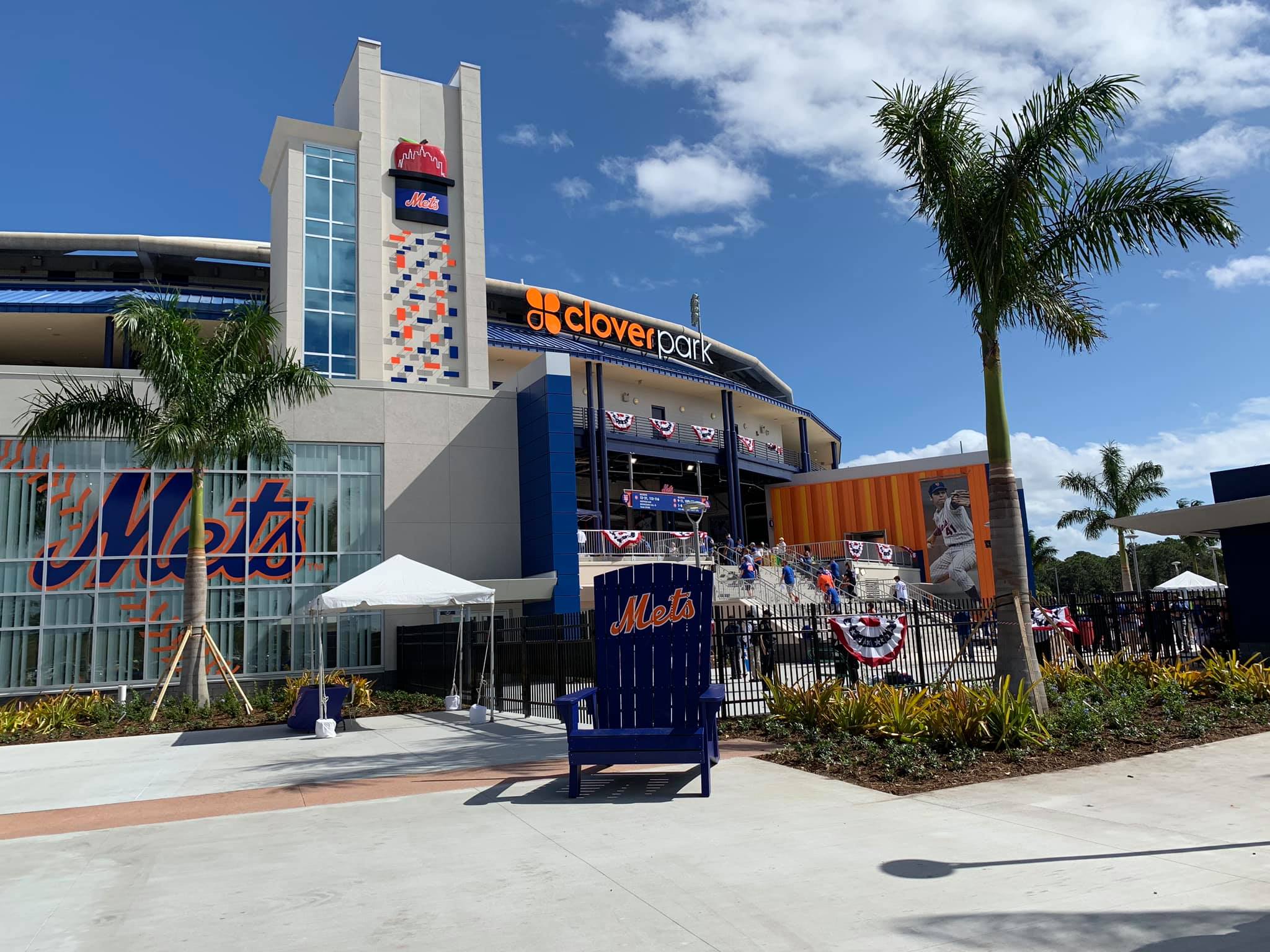

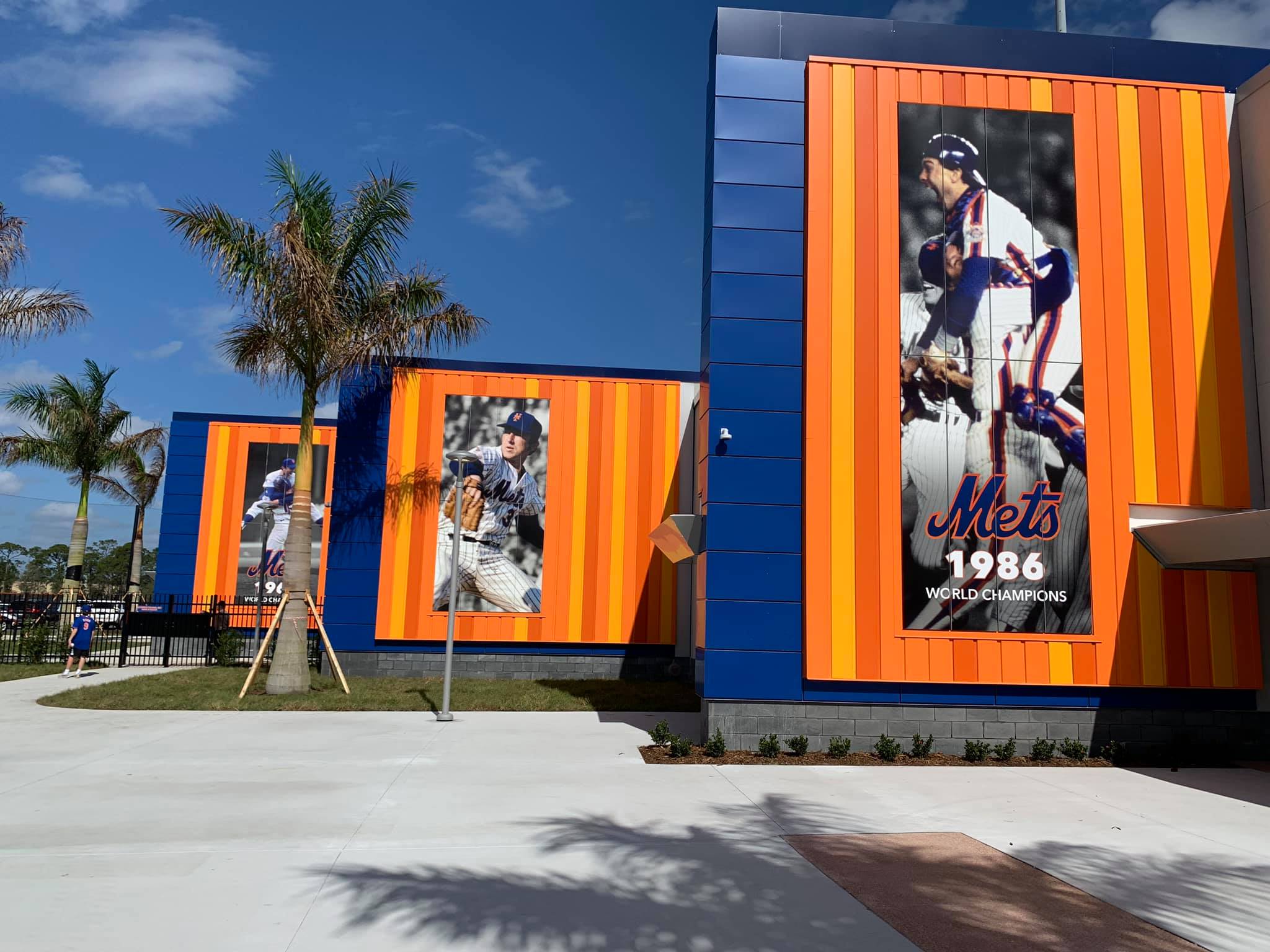


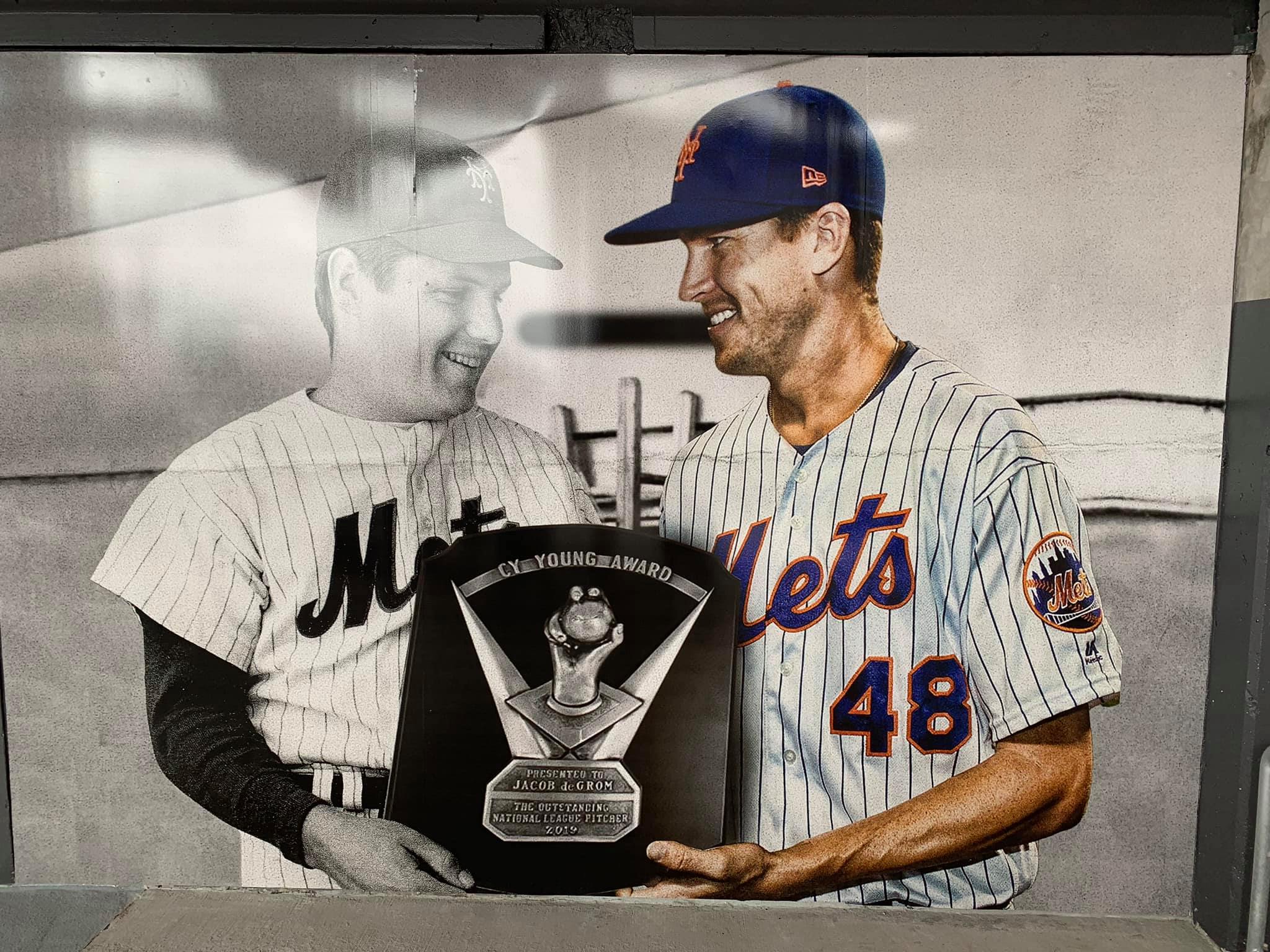
Clover Park
| Setting | 7.5/10 | Thumb Sideways | Location/Access | 7.5/10 | Thumb Sideways |
|---|
| Architecture & Aesthetics | 20/28 | Thumb Sideways |
|---|---|---|
| Exterior Design/Aesthetics | 7.5/10 | 1 Thumb Up |
| Interior Aesthetics/Visuals | 10/15 | 1 Thumb Down |
| Concourse Aesthetics | 2.5/3 | 1 Thumb Up |
| Functionality & Essentials | 18/25 | Thumb Sideways |
|---|---|---|
| Sightlines | 7.5/10 | Thumb Sideways |
| Seat Comfort | 4.5/5 | 1 Thumb Up |
| Concourse Functionality | 4/7 | Thumb Sideways |
| Scoreboards/Tech | 2/3 | Thumb Sideways |
| Amenities & Features | 13/20 | Thumb Sideways |
|---|---|---|
| Concessions | 8/10 | Thumb Sideways |
| Premium/Group Seating | 2/4 | Thumb Sideways |
| Social Spaces | 3/4 | 1 Thumb Up |
| Kids Areas | 0/2 | 1 Thumb Down |
| Atmosphere, Vibe, & Policies | 15/17 | 1 Thumb Up |
|---|---|---|
| Ballpark Personality | 9.5/10 | 2 Thumbs Up |
| Fan Support | 3.5/5 | Thumb Sideways |
| Ballpark Policies/Staff | 2/2 | 1 Thumb Up |
| Bonus | 7 |
|---|---|
| Final Score | 80.5 |
|---|---|
| Ranking | FL: #12/13; Overall: #20/23 |
|---|---|
By: Cole Shoemaker
Unlike Dunedin Stadium (TD Ballpark), the other spring ballpark renovated for 2020, Clover Park was considered state-of-the-art for its time, even if these 2020 renovations weren’t as extensive. Originally known as Thomas J. White Stadium, the big and bulky structure possessed an architectural vision of a mini-Shea Stadium, nothing like the other basic-two story spring training edifices built during the 1980s.
The park had ramps, four stories of drab gray concrete, the largest press box in spring training when it opened, clubhouses accessible in the dugouts for both teams, a grandstand with all fold-down seats, and a sprawling cantilevered roof to protect fans from the elements, a far cry from the make-shift looking iceboxes of the era.
This was a home away from home meant to last for the Mets. Unfortunately, these architectural trends haven’t aged well in the era of “intimate parks with fan-friendly amenities.” Clover Park seems to realize that, so it’s now trying to change the conversation.
Clover Park is now on its third life (and fifth name). The stadium opened in 1988 as a utilitarian, concrete monstrosity loosely evoking Shea Stadium, but was renovated in 2004 with warm red brick on the outside to fit the retro-classic sensibilities of the time.
The Mets spring training ballpark 3.0 of 2020 is far more interesting, heavily leaning into its mini-Shea Stadium roots by reversing those reactionary impulses of 2004, but in a way that more authentically honors the period’s aesthetics than 1980s mimicry.
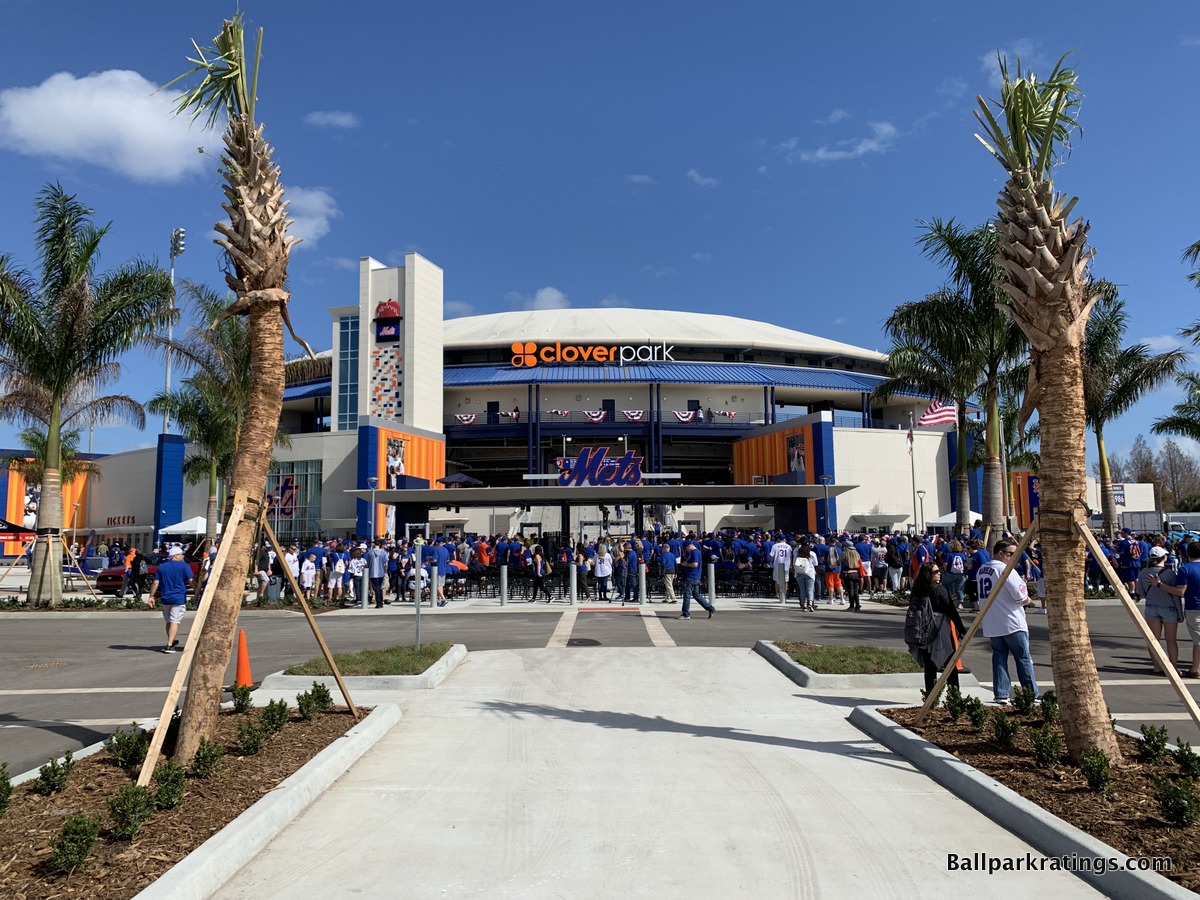
After so many retro-classic ballparks echoing the sensibilities of an Ebbets Field, Clover Park tries something new: a “retro” ballpark that captures the nostalgia of the 1960s and 70s. This has to be the first ballpark in modern history that actually removed brick in favor of concrete, not the other way around!
The results might not be everybody’s cup of tea, and the renovations are mostly concentrated on the outside and on the concourses through New York Mets’ branding, but it’s obviously a bold endeavor, and one that makes architectural sense given the superstructure.
Renovations to the essentials and amenities, including a 360-degree concourse, were cut at the last minute, so Clover Park 3.0 still scores well below most Grapefruit League facilities overall.
Fairly isolated on the Treasure Coast of Florida, First Data Field doesn’t have the best location. North of the glamour of Boca Raton or the glitz of Palm Beach, the area around the complex is characterized by run-of-the-mill chain restaurants and strip malls. There is a rural swamp-like sensibility around the ballpark that’s kind of charming, as the “Beware of Alligators” signs are not just merely precautionary.
Aesthetically, the re-envisioned exterior is fittingly unashamed of its unadorned concrete, but features splashes of color typifying the team and the era. Red, orange, and yellow stripes run up and down the façade, classic player murals and championship banners hang from walls, and in the most explicit callback to Shea Stadium, the elevator tower is adorned with the rectangular blue and orange panels of the 1964 World’s Fair. Note the depiction of the home run apple too!
The new exterior is also in better keeping with the bulbous concrete canopy of the original design, which never really meshed with the more traditional red brick of the 2004 renovation. Also, note further work on the landscaping will be completed later in 2020.
The interior aesthetics within the seating bowl were not enhanced, much to my disappointment. The ballpark’s most dominant element is the towering concrete roof. The dreary gray concrete and austere structure makes Clover Park one of the uglier spring training parks on the inside. By their very nature, spring training parks are inoffensive, but this is an active blemish in my opinion. At least we now have an attractive exterior that fits with it, though.
Overall, I have the architecture and aesthetics as still below-average because of the pre-existing seating bowl aesthetics, but I do appreciate the new exterior.
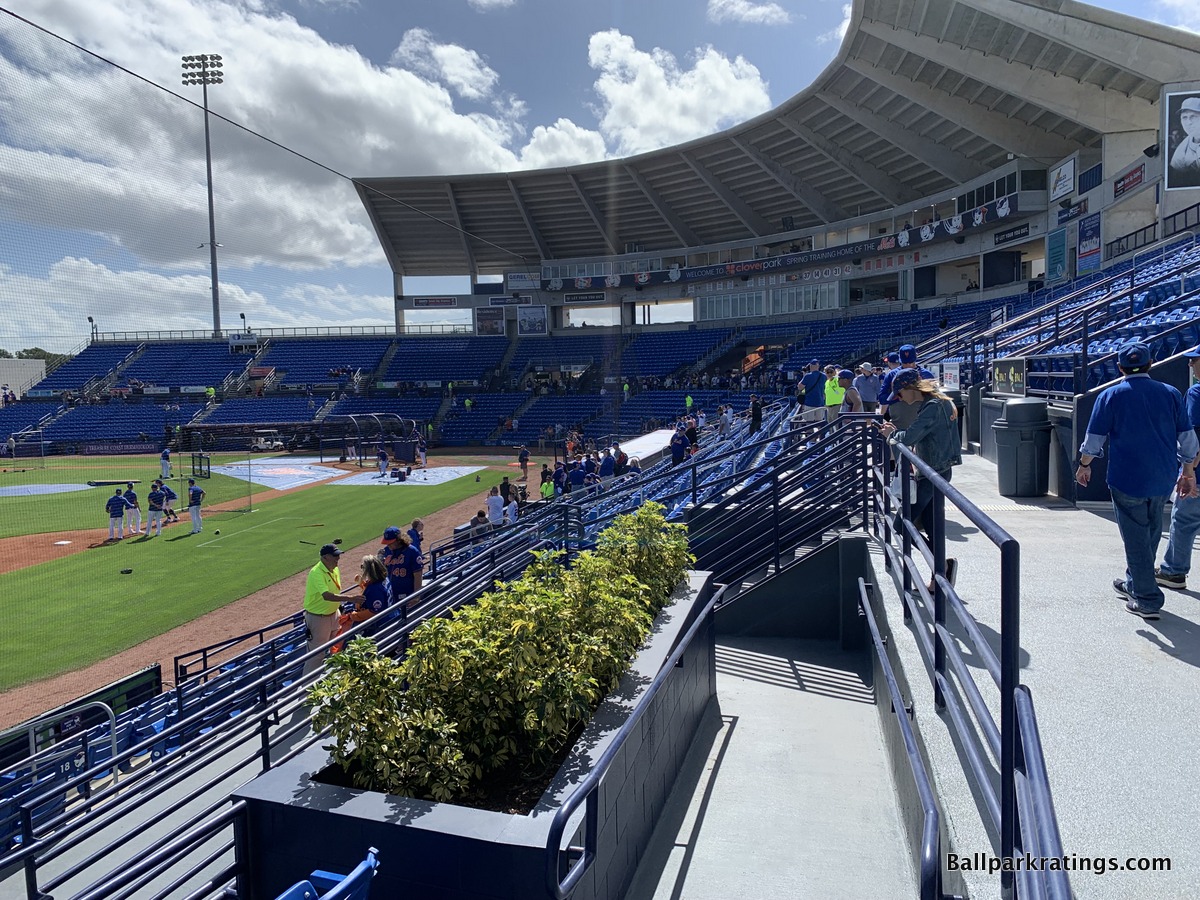
Inside and out, regardless of what you think of the architecture, the best part of Clover Park 3.0 is that it undoubtably screams “New York Mets!”
So many spring training ballparks, particularly those in Arizona, fail to bring a regional flare or represent the teams that play there. Not only is the history of the Mets honored on the exterior facades, but the concourse features some of the most creative intergenerational artwork seen in a ballpark.
In an effort to bridge the eras, images of past Mets’ greats are fused with those of the present, such as Tom Seaver exchanging his Cy Young Award with Jacob DeGrom. These elevated concepts are most appreciated. Members of the Mets Hall of Fame have their own columns. There are also cool Floridian takes on Mr. and Mrs. Met throughout the park. All of this is team branding at its finest.
The park also has a 9/11 memorial outside, another nod to New York.
From a functional standpoint, Clover Park is really hindered by that tightened budget. With no 360-degree concourse, only the left field walkway is extended. This is disappointing to say the least, as a wraparound concourse was a crucial feature of almost every Grapefruit League renovation project of the past 10 years. I think the ability to stroll all the way around the ballpark on the inside is key, and that is missing here.
On the plus side, the width of the concourse itself has been greatly expanded, as Clover Park formerly featured some of the most constricted walkways in spring training baseball. The concourse is still closed from the field, but this is now a much more pleasant system to navigate. The easier connection from the main concourse to the right field deck is the most welcome change.
Clover Park also now features a proper entrance behind home plate. Blurring the concepts of “exterior,” “concourse,” and “interior,” the enlarged grand portal gives fans an immediate sense of arrival. It also helps open up the closed concourse system. All fold down seats are new as well.
It’s a truism that all spring training ballparks have great sightlines, but that’s not as true as it could be here. The decking structure is needlessly steep and quite pronounced, lacking the intimacy seen in most comparable facilities. The videoboard added in 2012 was not upgraded during this round of renovations and is a tad dated.
Amenities throughout the park, already respectable due to the 2004 renovation and 2012 upgrades, have only been marginally upgraded, headlined by the new bar in left field. Overall, they’re still average to below-average.
I was disappointed by the food, which actually seems to have taken a step backward since I was last here in the mid-2010s. While it varied year-to-year, the Mets used to import a high-quality Italian concession stand and other local specialties from the Port St. Lucie area. I didn’t see any of that at the grand reopening. At least Taco in a Helmet is back, and arepas are of note.

Clover Park still does a very good job of providing all fans with bars and social spaces to sit down and hang out on the concourses. The Mulligan’s Bar down the right field line remains, with sharp-looking swivel chairs added. Still plenty of free picnic table seating down the right field line, with those down the left field line reserved for private parties.
The new signature feature Mets fans will notice is the sprawling open-air Jim Beam Bar beyond the left field fence. Formerly a dormant area, the bar sports incredible views of the complex on both sides.
No new unique seating options or group areas were added during the renovations. The same 3 snazzy luxury suites are still perched above the seating bowl, flanked by 4 picnic boxes. Another floor above these luxury suites and picnic boxes are the few preexisting “skyboxes.”
While minor, there is no area for the kids, a common staple of spring training ballparks in both Florida and Arizona. The latter is also a downgrade, as Clover Park used to have speed pitch games.
Overall, I still don’t think Clover Park is in league with the best spring training facilities (a high bar), mostly due to cost cutting, but it’s an impressive effort that actually exceeded my expectations.
The memorable exterior and striking team branding certainly reflect the Mets’ history, so Clover Park 3.0 should be a spring destination for casual and diehard Mets fans alike.